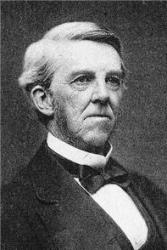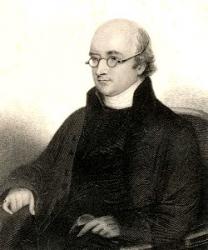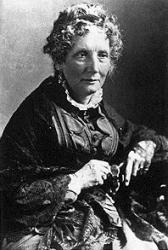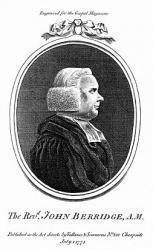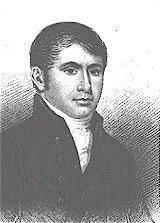
1802 - 1865 Hymnal Number: 228 Author of "The child leans on its parent's breast" in Hymns of the Ages (3rd series) Isaac Williams was born in London, in 1802. His father was a barrister. The son studied at Trinity College, Oxford, where he gained the prize for Latin verse. He graduated B.A. 1826, M.A. 1831, and B.D. 1839. He was ordained Deacon in 1829, and Priest in 1831. His clerical appointments were Windrush (1829), S. Mary the Virgin's, Oxford (1832), and Bisley (1842-1845). He was Fellow of Trinity College, Oxford, from 1832 to 1842. During the last twenty years of his life his health was so poor as to permit but occasional ministerial services. He died in 1865. He was the author of some prose writings, amongst which are Nos. 80, 86 and 87 of the "Oxford Tracts." His commentaries are favourably known. He also published quite a large number of poems and hymns and translations.
--Annotations of the Hymnal, Charles Hutchins, M.A., 1872
==========================
Williams, Isaac, B.D., was born at Cwmcynfelin in Cardiganshire, Dec. 12, 1802, where his mother happened to be staying at her father's house at the time of his birth. But his parents' house was in Bloomsbury, London, his father beiug a Chancery barrister at Lincoln's Inn. He received his early education from a clergyman named Polehampton, with whom he was at first a day pupil in London, but whom he afterwards accompanied to a curacy at Worplesdon, near Guildford. All Mr. Polehampton's pupils (15), with the exception of Isaac Williams and his two elder brothers, were being prepared for Eton, where great stress was laid upon Latin versification; and it was in these early years that Isaac Williams acquired his fondness for, and proficiency in, this species of composition. In 1814 he was removed to Harrow, where Mr. Drury was his private tutor. He gained several school prizes, and became so used, not only to write, but to think, in Latin, that when he had to write an English theme he was obliged to translate his ideas, which were in Latin, into English. In 1821 he proceeded to Trinity College, Oxford, that college being chosen on the advice of Mr. Drury; and in his second term he was elected scholar of Trinity. In 1823 he won the University Prize for Latin Verse, the subject being Ars Geologica. The gaining of this prize was indirectly the turning point of his life, for it brought him into close relationship with John Keble, who may be termed his spiritual father. He had been previously introduced to Mr. Keble by the Vicar of Aberystwith, Mr. Richards, whom he had met at his grandfather's house. But there was no intimacy between them until he had won the Latin Verse Prize, when Mr. Keble came to his rooms and offered to look over the poem with him before it was recited and printed. This led to an intimate acquaintance which ripened into a warm friendship of infinite benefit to Isaac Williams's spiritual life. Mr. Keble offered to take him with him into the country and read with him during the Long Vacation, without any payment. Robert Wilberforce, then an undergraduate of Oriel, was also to be of the party. They settled at Southrop, near Fahford, a name familiar to the readers of Keble Life. Here Isaac Williams made the acquaintance of Hurrell Froude, who was also reading with Mr. Keble, and this acquaintance also ripened into a friendship which was terminated only by death. Keble was like a boy with his pupils, entering with zest into all their amusements, but he also exercised a deep influence over their religious characters, especially that of Isaac Williams. Williams spent this and all his subsequent Long Vacations at Southrop, and became more and more influenced for good by Mr. Keble.
He also became a great friend of Sir George Prevost, then an undergraduate of Oriel, who afterwards married his only sister. During one of these sojourns at Southrop, Keble showed Williams and Froude a manuscript copy of the Christian Year, but, strange to say, the young men did not appreciate its beauties. Williams's intimacy with Keble caused alarm to Mr. Hughes, the successor of the Vicar of Aberystwith who had first brought the two together; Mr. Hughes was greatly shocked to hear that he was a friend of Mr. Keble of Oriel, and said he would introduce him to a most excellent and promising person there, a Mr. Newman, whom the evangelical vicar knew in connexion with the Church Missionary Society, and who would, he doubtless thought, supply an antidote to Keble's High Church opinions. While Williams was an undergraduate at Oxford, though he was a member of Trinity College, he spent much of his time at Oriel, attracted thither, not only because it was Keble's college, but also because he had many friends there, the chief of whom were the Wilberforces, Ryder, Anderson (now Sir C. Anderson), Hurrell Froude, and Sir G. Prevost. As an accomplished scholar who had the benefit of Keble's tuition, it was naturally expected that he would take a high degree; and so, no doubt, he would have done, had he not attempted too much. In spite of the warnings of friends, he resolved to aim at a "double first," and, as mathematical studies were not to his taste, the labour over this uncongenial work in addition to the necessary preparation for the classical school was too severe for him; his health broke down, and he was obliged to be content with a pass degree.
In 1829 he was ordained to the curacy of Windrush, about twelve miles from Fairford where Keble then lived, and about twenty from Bisley, where his brother-in-law, Sir George Prevost, who was now married, was curate. But he did not stay long at Windrush. Passman though he was, he competed successfully for a Trinity Fellowship, and had to return to Oxford the same year as college tutor. He lived on terms of great intimacy with Hurrell Froude, then Fellow of Oriel, and was introduced by him to J. H. Newman, to whom he was much attracted, like almost all who were brought into contact with that remarkable man. The attraction appears to have been mutual, and Williams became Newman's curate at S. Mary's, Oxford, which then included the village or rather hamlet of Littlemore. In 1842 he married Caroline, the third daughter of Arthur Champernown, of Dartington Hall, Devon, left Oxford, and went to Bisley as curate to Mr. T. Keble. So far as his outer life went, little more need be said. Nothing seems to have occurred to ruffle its placid course, except one episode which occurred in 1841-2. When John Keble resigned the Poetry Professorship at Oxford, he was naturally anxious that his friend Williams should be his successor. Not only was there a warm personal friendship and an entire sympathy of opinion on the most important of all matters between the two men, but on the score of poetical merit, Williams seemed to him obviously the proper person. He had already published several of his poetical works, and his reputation as a sacred poet was second only to that of Keble himself. But he was also identified in a peculiar way with the Tract writers. He had actually written that Tract which, next to the memorable Tract 90, had given the greatest offence of all, viz.: Tract 80, on Reserve in the Communication of Religious Knowledge, and he was also known as the especial friend and late coadjutor of Newman. It is not, therefore, surprising that vehement opposition was raised against his election. A rival candidate was found in the person of Mr. Edward Garbett, of Brasenose, a First Classman, but quite unknown in the domain of poetry. There was really no comparison whatever between the fitness of the two candidates, but that counted for little when men's minds were heated by the "odium theologicum." It became simply a party question; but a public contest was happily averted by a private comparison of votes, when it was found that there was a large majority of votes in favour of Mr. Garbett. Mr. Williams was much hurt—not by the opposition of the Low Churchmen, for he expected that,—but by the desertion of several whom he counted upon as friends. He withdrew from Oxford and from public life (which had never possessed much attraction to a man of his retiring and studious habits) altogether. He remained at Bisley until 1848, when he removed to Stinchcombe; and there he lived until his death. From time to time some cultured and thoughtful work from his pen was given to the world, but that was all; and when the announcement that he had quietly passed away on SS. Philip and James Day, May 1, 1865, appeared, the outer world had almost forgotten that he was still living, though it had not forgotten, and will not, it is hoped, while the English language lasts, ever forget his writings. He died of a decline, the seeds of which had long been sown.
As a devotional writer both in prose and verse the name of Isaac Williams stands deservedly high, but as a writer of hymns for congregational use, he does not, either for quantity or quality, at all reach the first rank. Indeed, it would have been very distressing to him if he had done so, for he shared the distaste which most of the early leaders of the Oxford movement felt for the congregational use of any metrical hymns apart from the Psalter, and it is said that he purposely made his translations of the Hymns from the Parisian Breviary rough, in order to prevent them from being so used. His poetical works are:—
(1.) The Cathedral, his first publication in verse, issued in the early part of 1838. It was written about the same time as the famous Tract on Reserve, and "in pursuance of the same great object we had undertaken " (in the Tracts for the Times). What that object was is intimated in the alternative title, The Cathedral, or the Catholic and Apostolic Church in England. It followed very much the same lines as George Herbert's Temple, only it worked out the ideas far more in detail, connecting each part of the edifice with some portion of church doctrine or discipline. The whole volume is written in the true spirit of poetry, and some of the sonnets in it are good specimens of that difficult form of composition; but it contains scarcely any verses out of which even centos of hymns can be formed.
(2.) Later on in the same year (1838) he published a volume, entitled Thoughts in Past Years, though, as the title implies, many of its contents were written at an earlier date. In fact the composition ranged over a period of at least twelve years. In the writer's own opinion there was more true, poetry in this volume than in The Cathedral, but the latter had the advantage of being written on one systematic plan, while the Thoughts was a collection of detached poems. The connexion between the four divisions of the volume was, that they were all suggested by the writer's surroundings. Thus the “Golden Valley" was the beautiful district in the neighbourhood of Stroud known by that name; "The Mountain Home" was the writer's own birthplace, Cwmcynfelin in Cardiganshire; "The River's Bank" was the River Windrush, on the banks of which was the writer's first curacy; "The Sacred City" is Oxford. In a later edition (1852) there is an additional division entitled "The side of the Hill," that is, Stinchcombe Hill, Gloucestershire. Like The Cathedral, this is rather a volume of sonnets and sacred poems for private use, than of hymns in the popular sense of the term. The same volume contains his Beliquiae Latinae; or Harrow School Exercises, and his Oxford Prize Poem, Ars Geologica. The Latinity of these poems fully bears out the writer's own remark, that in his early years he was more at home in Latin than he was in his own language. It also contained a translation of the "Dies Irse, Dies Ilia," to which, in the revised and enlarged edition of 1848, were added, under the title of Lyra Ecclesiastica, a number of translations from other Latin and Greek Hymns. These translations are for the most part very free, and are not adapted, as they were certainly not intended, for congregational use.
(3.) His next publication was Hymns translated from the Parisian Breviary, 1839. He thought that "the ancient Latin hymns were the best source from which our acknowledged deficiency in metrical psalmody should be supplied, as being much more congenial to the spirit of our own Liturgy than those hymns which are too often made to take part in our ancient services;" and he had already published many of the translations which appear in this volume, at intervals from 1833 to 1837, in the British Magazine, the church organ which was edited by Hugh James Rose. A few hymns from this volume, e.g. "0 Heavenly Jerusalem," "Disposer Supreme," "0 Word of God above," have been adopted for congregational use, but most of these are, perhaps purposely, done into such irregular metres, that they are not available for the purpose. Indirectly, however, they have been highly serviceable to the cause of congregational psalmody, for Mr. Chandler tells us in the Preface to his Hymns of the Primitive Church that Mr. Williams's translations in the British Magazine led him to produce that work.
(4.) The next little volume, Hymns on the Catechism, was written at Bisley and published in 1842. Its object was strictly practical; it was intended as "an aid towards following out that catechetical instruction which is so essential a part of the church system." It cannot be said that these hymns are likely to be so attractive to children, as, for example, those of Mrs. Alexander, but they are suitable for congregational, or at any rate, for Sunday school use, and one of them, "Be Thou my Guardian and my Guide," has found its way deservedly into most collections.
(5.) In the same year (1842) a much more ambitious work, The Baptistery, also saw the light. One seems to recognize in this work the pupil of John Keble, for its leading idea is very much the same as that of Tract , viz.: that earthly things are a shadow of heavenly. It is divided into thirty-two "Images," as the author terms them; it is not easy reading, but it well repays the careful attention which it requires, for both in form and matter it is the product of a true poet. One of the "Images," the 20th, "The Day of Days, or the Great Manifestation," has supplied our well-known hymn, "Lord, in this, Thy mercy's day," but the general tenour of the work is quite apart from hymnody.
(6.) The same may be said of The Altar, published in 1847, which takes the second great Sacrament of the Gospel, as The Baptistery took the first, for the basis of a series of devout meditations, 34 in number. The first edition was illustrated by 34 pictures, one to each meditation, after the fashion of a foreign book which the writer had seen; but the illustrations were thought unworthy of the subject, and the later editions appeared without them. The object of the work was to connect the various events which occurred at the time of our Blessed Lord's Passion with the Eucharistic Service. It consists exclusively of a series of sonnets, and supplies no hymns for congregational use.
(7.) In the same year (1849) appeared another work of a very different type. It is entitled The Christian Scholar, and its object is "to render the study of the classics subservient to a higher wisdom." It incidentally gives us an interesting insight into the author's own training under Mr. Keble, for he tells us in the Preface that he himself "derived, not merely moral benefit, but actual religious training from this indirect mode of instruction in another to whom he owes everything that renders life valuable." The plan of the book is, in a word, to take passages from all the chief classical authors, and to give Christian comments on each.
(8.) His only other poetical work was Ancient Hymns for Children, 1842, which consisted of a reprint, with slight alterations, of 30 of his translations from the Latin, previously published in 1838 and 1839 as above.
Although Isaac Williams's prose writings are as valuable, and perhaps more popular than his verse, yet from the point of view of this article it will suffice to enumerate the principal of them. They include—
Several reviews for The British Critic at various dates; Thoughts on the Study of the Gospels, 1842; Sermons on the Characters of the Old Testament, 1856; The Beginning of the Book of Genesis, with Notes and Reflections, 1861; The Psalms interpreted of Christ, vol. i., 1864 (no other volumes were published); A Memoir of the Rev. R. A. Suckling, late Perpetual Curate of Bussage, 1852; A Harmony of the Four Gospels, 1850; Sermons on the Epistles and Gospels, 3 vols., 1853; Sermons on the Female Characters of Holy Scripture, 1859; The Apocalypse, 1851, and many other minor works.
Besides these, he edited a large number of Plain Sermons at different dates by various writers, and he also wrote some of the Tracts for the Times, notably Tract 80 (1838), and 87 (1840), on Reserve in Communicating Religious Knowledge. It is difficult to see why these should have given so much offence. The principles on which the conclusion is based are obviously correct. Perhaps the title Reserve was alarming when men's minds were excited by the fear that they were being led by the new Oxford school they knew not whither. These two Tracts, with Tract 86, also by Isaac Williams, would fill an octavo volume of more than 200 pages. Both the character and the writings of Isaac Williams are singularly attractive. They both present a striking combination of qualities which are not often found in union. He was as firm as a rock in the maintenance and expression of his principles, but so quiet and retiring that his personality came far less before the public than that of any of the other leaders of the Oxford movement. His writings are so Christian and unaggressive in their tone that we are won over to his side almost without knowing it. He was a most valuable ally on this very account to his party, and the hymnologist may well regret that he did not devote his exquisite poetical taste, his refined culture, and his ardent piety more to hymnwriting than he did. [Rev. J. H. Overton, D.D.]
Isaac Williams's position in hymnody does not lie so much in the actual work which he did, as in the influence he had over others. His translation from the Latin, mainly through the metres which he deliberately adopted, have not had a wide acceptance in the hymnody of the Church. J. Chandler, however, has left it on record that Williams's translations in the British Magazine led him to undertake kindred work, and Chandlers translations are amongst the most popular in the English language. Williams's Hymns on the Catechism, 1842, were with, Dr. Neale's Hymns for Children of the same year the forerunners of the more popular productions on the same lines by later writers. Of his original hymns the following are also in common use:-
1. How solemn, silent, and how still. Obedience (1842.)
2. Jesus, most loving Lord. Hymn to Christ (1844.)
3. Lord, Thou dost abhor the proud. Humility.
4. Members of Christ are we. Members of Christ.
5. The child leans on its parent's breast. Trust in God. (1842.)
6. The High Priest once a year. Ascension. (1842.) The dates here given indicate the works in which these hymns appeared.
-- John Julian, Dictionary of Hymnology (1907)
Isaac Williams


 My Starred Hymns
My Starred Hymns

